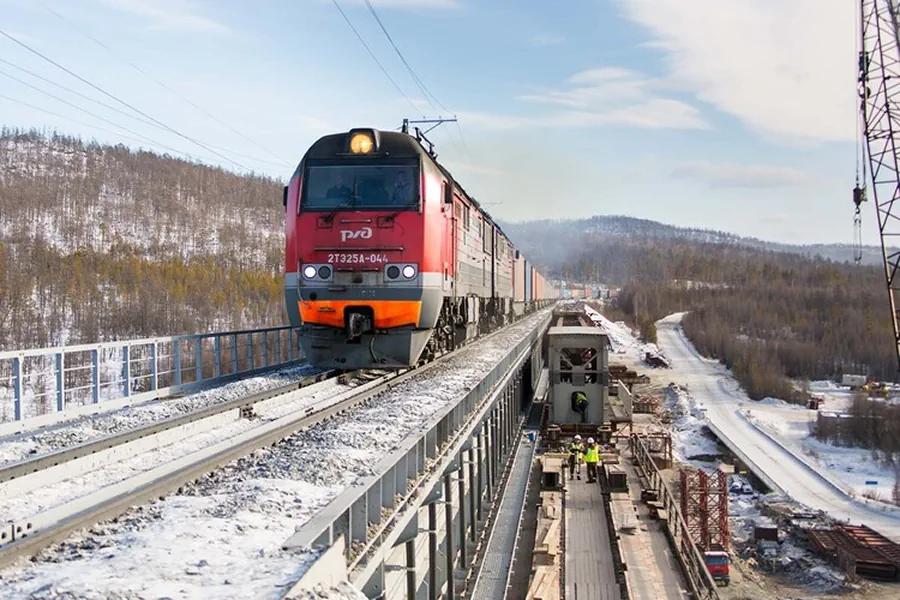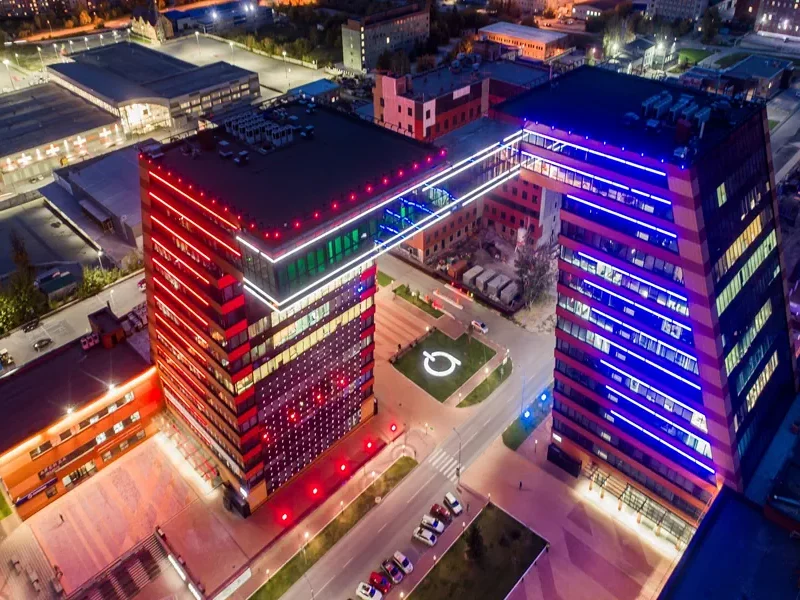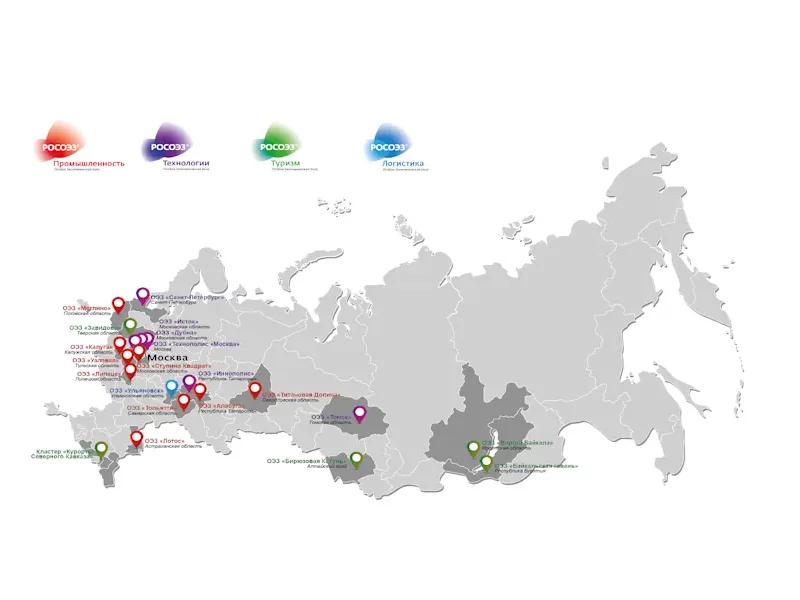The Great Siberian Route -The longest railway in the world, the Trans-Siberian Railway, spans 9,288.2 km (1,777 km in the European part and 7,512 km in the Asian part). It was constructed from 1891 to 1916. The Trans-Siberian Railway (or the Great Siberian Route) currently crosses 20 regions of the Russian Federation.

The need for a railway connecting the European part of the empire with its eastern territories had been felt for a long time. As early as 1857, General-Governor of Eastern Siberia N. Muravyov-Amursky wrote a letter emphasizing the improvement of communication in the eastern part of Russia with its center. The issue began to be addressed in the 1880s, with all work planned to be funded by the state.
According to preliminary estimates, the cost was expected to be 350 million rubles. The actual amount spent in 1916 exceeded the initially defined financing several times. Expeditions conducted exploratory work for several years, starting from the second half of the 1880s. There was an understanding that laying the railway would be challenging due to harsh climatic and topographic conditions. Three route options were proposed:
- From Tyumen through Mariinsk, Achinsk, Krasnoyarsk, Nizhneudinsk – the shortest, but required building a road from Nizhny Novgorod to Perm.
- From Orenburg through Akmolinsk, Minusinsk, Nizhneudinsk – the longest.
- From Miass through Chelyabinsk, Kurgan, Omsk, Nizhneudinsk – passing through the populated and fertile part of Siberia.
The western section of the Trans-Siberian started in Chelyabinsk. The Trans-Siberian was constructed simultaneously from Vladivostok and the Southern Urals. The beginning of the work is considered May 32, 1891 when Nicholas II laid the first stone on the Ussuri Railway. But, in March of the same year, an embankment was already being prepared on the Miass – Chelyabinsk section. In the European part of the country, the mainline was constructed in several stages, starting with the road from St. Petersburg to Moscow, with continuous traffic opening in 1851. The final section of the road approaching Siberia (Zlatoust – Miass – Chelyabinsk) was completed in 1892 on the territory of the Urals. A significant problem was attracting workers for the grand construction.
They were recruited from central Russia, including exiles, soldiers, and Siberian peasants. The pace of work was impressive, constructing no less than 500 km of railway per year. Operations commenced in November 1901 after the laying of the golden link on the Chinese Eastern Railway. However, train movement across the entire route had not yet started. Only in July 1903 was the entire Great Siberian Route put into operation.
After the completion of the construction of the Circum-Baikal Railway in 1905, a continuous rail track was established from the capital of the empire to Vladivostok. Almost immediately after putting the mainline into operation, it became clear that the volume of transportation would be enormous, necessitating the construction of a second track. Before the Great Patriotic War, a significant section of the road was converted to double-track. During the war, people and enterprises were evacuated along the Trans-Siberian, and cargo and military personnel were transported to the front. Internal Siberian transportation did not stop. After the war, activities to modernize the mainline took place.
In 1956, the electrification of the railway began, with full electrification completed in 2002. In the 1990s, efforts began to increase the capacity of the Trans-Siberian. The railway bridge over the Amur near Khabarovsk was reconstructed for this purpose. As a result, the last single-track section of the mainline was eliminated.
Among other important events on the Trans-Siberian in the second half of the 20th century and the early 21st century: the reconstruction of the Khingan tunnels and the construction of a new bridge over the Yenisei in Krasnoyarsk. The Trans-Siberian is a route for both passenger and accelerated freight transportation.
All-Union Komsomol Construction
The length of the Baikal-Amur Mainline (BAM) from Tayshet to Sovetskaya Gavan is 4300 km, passing through the territories of Eastern Siberia and the Russian Far East. It is located north of the Trans-Siberian Railway, running parallel to it. One of its main advantages is that the mainline runs deep within the country, away from the borders.
The road was constructed in a region with harsh climatic and terrain conditions: permafrost, full-flowing rivers, high seismicity, and mountain ranges.
At the beginning of the 20th century, it became evident that a railway duplicating the Trans-Siberian was needed. Plans were made to lay a mainline from Ufa to the seacoast.
Practical measures began in the late 1920s. The Soviet government issued a resolution on the construction of the Baikal-Amur Mainline (1932). All work was planned to be completed in 3 years, with the opening of traffic scheduled for 1935. The road was supposed to run from the station Uruha to Komsomolsk-on-Amur. The construction was initiated by prisoners of the BAMlag. During the war, the laid rails were dismantled as metal was needed for the front.
In 1958, the construction of the section Tayshet – Ust-Kut was completed.
In 1974, large-scale work on the mainline began, with the main workforce being military personnel and youth squads. The average age of the builders did not exceed 30 years.
At the 17th Congress of the Komsomol (April 1974), the BAM was called the All-Union Komsomol Construction, and thousands of young people went to Siberia. In a ceremonial atmosphere, the congress delegates saw off the first group to the BAM.
The USSR is long gone, but the memory of the construction remains, with stations built by Republican Komsomol squads. For example, Estonians built Kicher, Muscovites built Tynda, Ukrainians built Urgal.
The construction of the mainline had strategic significance for the country: fast transit shipments, more efficient and cost-effective export of the region’s natural resources, and the ability to avoid transportation delays in case of interruptions on the Trans-Siberian.
The construction of the mainline took 10 years simultaneously from the west and east. The meeting took place in the Chita region (Balbukhta junction) on September 29, 1984. The ‘Golden Link’ of the BAM was laid on October 1 at the Kuanda station.
The date of the final completion of the mainline is considered December 2003 when the longest tunnel in Russia, the Severo-Muisky tunnel (15343 km), was put into operation.
The BAM has several branches, including one to Ust-Ilimsk. More than 2200 bridges have been built. The road has over 200 stations and junctions, dozens of cities, and settlements.
In 1985, construction began on a branch from Tynda to Yakutsk. Then, work slowed down for a long time. In 2019, passenger service was opened to the Nizhny Bestyakh station. The branch is not yet electrified.
In the 1990s, BAM development received little attention as territorial-production complexes were slowly being developed. Currently, work has intensified on developing coal, gas, and polymetallic deposits. Accordingly, freight transportation volumes are increasing.
Since 2014, work has been underway to lay second tracks on the existing embankment. Power systems are being modernized, and signaling and communication equipment are being installed.
Eastern Polygon

According to the national project ‘Comprehensive Plan for the Modernization and Expansion of the Main Infrastructure,’ the throughput of the Baikal-Amur and Trans-Siberian railway mainlines is planned to be increased by one and a half times by 2024, and the delivery time for container cargo should not exceed 7 days. In the current context, where economic ties with Asian countries are becoming increasingly relevant, the role of the Great Siberian Railway is particularly crucial.
The activities for the improvement of the Trans-Siberian Railway and the Baikal-Amur Mainline (referred to as the Eastern Polygon) are divided into several stages.
Significant work is being done on the Baikal-Amur Mainline since it is not electrified along its entire length, and some sections are single-track. However, it handles a substantial volume of freight transportation.
As part of the national project, stations are being reconstructed, tunnels are being built, and turnouts are being created to facilitate opposing traffic.
The rolling stock is being updated, including powerful locomotives capable of hauling heavy trains through the mountainous terrain typical of the Baikal-Amur Mainline. By 2024, the length of double-track sections on the mainline will increase by 1.5 km. Several stations, including Magdagachi, Severobaikalsk, and Apkan, are being modernized.
The Trans-Siberian Railway and the Baikal-Amur Mainline are connected by three branches. A bridge is being constructed on the Volochaevka 1 – Tungussky post section, and new tracks are being laid.
At the Zabaikalsk station, a transport and logistics complex has been opened, facilitating the transfer of goods from Russian-gauge wagons to Chinese-gauge wagons. This has reduced work time and increased the volume of freight traffic.
The ongoing reconstruction has lifted restrictions on traction power supply on 2051 km of track. To implement further plans in this direction, new power units are being constructed at the Neryungrinskaya and Partizanskaya GRES.
Since 2013, over 5,000 km of tracks and more than 350 km of overhead wires have been modernized on the Eastern Polygon, and 55 stations have been put into permanent operation.
The pace of railway improvement is increasing. For example, in the first half of 2023, more work has been done in terms of both money and physical volume than in the entire year 2021. In 6 months, 123 km of earthworks have been prepared for laying. The largest number of sections requiring a second track is found on the Komsomolsk-on-Amur – Sovgavan stretch.
The planned volume of transportation for the next year is 180 million tons. By 2027, this figure is expected to reach 197 million tons.
Why reconstruct the BAM and the Trans-Siberian Railway?
The modernization of railways is a key element of Russia’s national priorities. In the eastern front, these improvements not only contribute to increased freight traffic to Asian countries but also serve as a significant stimulus for economic growth in neighboring regions. This includes improving the standard of living in Eastern Siberia, Trans-Baikal, and the Far East, where railway infrastructure improvements have a tremendous impact.
What is being built now?
The second phase of the modernization of the Eastern Polygon, carried out as part of national projects, is planned to be completed by 2024. The main goal of this stage is to eliminate bottlenecks to accelerate freight movement. It is expected that these improvements will reduce the delivery time of goods from Asia to Europe to seven days.
The construction of a new double-track Kerak tunnel between Kovali and Ulruchi will accelerate train movement and increase throughput on the Trans-Siberian Railway’s Trans-Baikal section. Construction of the 926-meter tunnel, started in 2021, reached 70% completion of the upper part by April 2022. Work is ongoing from both sides, and the completion of tunneling is planned for the fall of 2022, after which interior finishing will begin.
To resolve one of the bottleneck zones and increase the capacity of the Eastern Polygon, construction has begun on a new railway junction between Volochaevka-1 and the Tungussky post in the Jewish Autonomous Region. This solution will eliminate problems caused by intersecting routes of freight trains and facilitate transportation flows. As part of the project, a railway bridge 113 meters long will be built, and new tracks totaling about four kilometers will be laid, along with a new platform for suburban trains. It is expected that the new junction will be operational by 2024.
The capacity of the Volochaevka node at the intersection of the Trans-Siberian Railway and the BAM branch will increase to 167 million tons by 2025, thanks to the new junction.
The opening of the transport and logistics complex at Zabaikalsk station was a key moment in the modernization program of the Eastern Polygon within the framework of the national project.
The new terminal at Zabaikalsk station will handle the transshipment of imported goods, including containers, coal, and perishable goods. For efficient operation, the terminal is equipped with nine gantry cranes, including those capable of lifting up to 100 tons, and ten compact loaders. The launch of the terminal at Zabaikalsk station has led to the creation of 98 new jobs.
How will the reconstruction of the Baikal-Amur Mainline (BAM) and the Trans-Siberian Railway impact the economy?
This large-scale construction project will not only provide orders for local suppliers and contractors but will also contribute to the creation of new jobs. Increasing the capacity of railways plays a key role in the economy: based on the expected improvement of transportation infrastructure, companies can plan their investment projects, expand their businesses, and hire more personnel.
The development of railway infrastructure affects many aspects of life in the region. Primarily, it involves the towns and villages along the railways, where new jobs emerge due to construction. There is also an improvement in transportation accessibility due to new roads, and upgrades to telecommunications and gas and water supply systems. The increase in freight transport leads to the introduction of new goods in cities, stimulating trade. These changes also contribute to the migration of people from remote areas to places closer to the railway lines.
Improving transportation infrastructure will enable the country to increase its exports. This will contribute to the growth of entrepreneurs’ income and an increase in tax revenues to the state budget. It will also strengthen the political and economic influence of the country in importing states, such as Japan, Korea, the Philippines, and others.
Разрабатываем Стратегии для собственников бизнеса в целях оптимизации группы компаний, решения нестандартных задач и продажи активов. Оказываем услуги по сопровождению сделок M&A, управлению непрофильными активами и проектами в целом.













